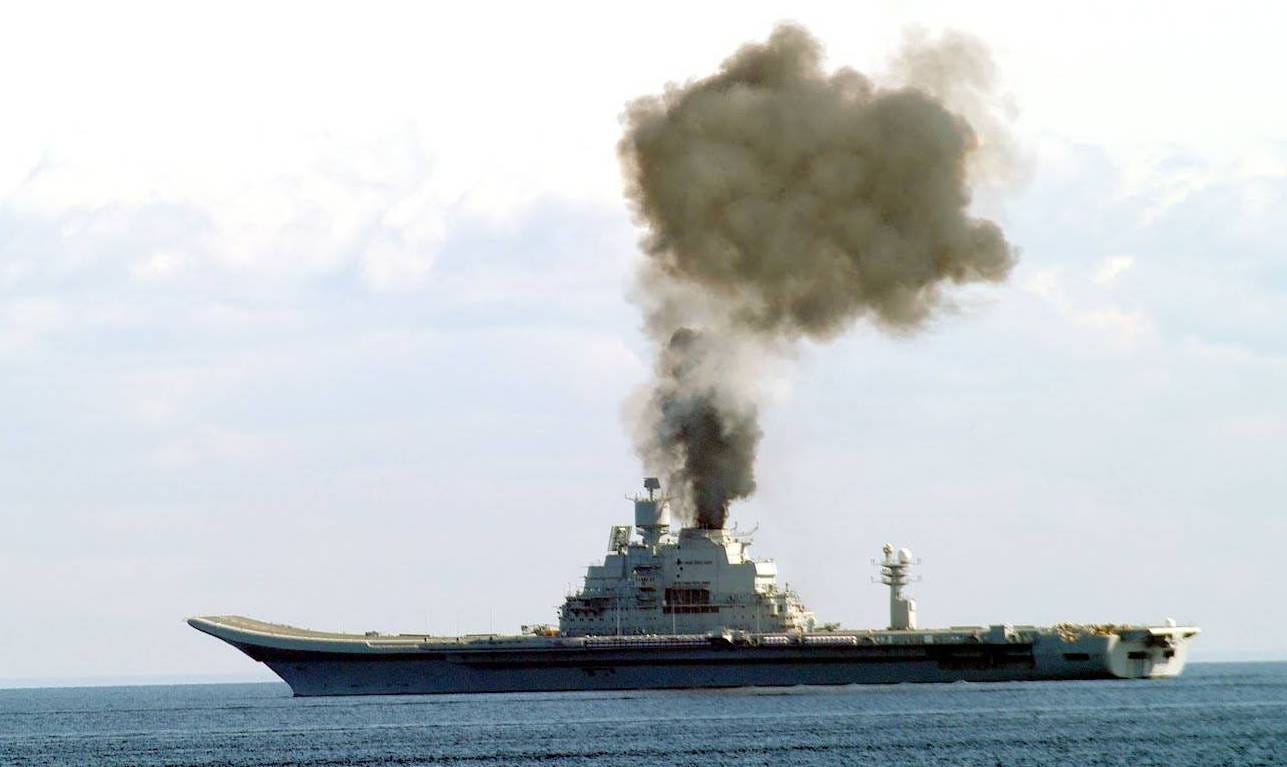| 遼寧號可能具有印度航母相同的問題。 |
| 送交者: SDUSA 2014年02月11日19:51:25 於 [軍事天地] 發送悄悄話 |
|
轉自"War is boring" by David Axe India’s refurbished Soviet-made aircraft carrier Vikramaditya suffered a boiler failure during her 42-day trip from Russia’s Sevmash shipyard, where she was rebuilt, to the Indian Karwar naval base on the country’s west coast starting in late November. Like many Cold War-era warships, Vikramaditya is powered by complex steam boilers that can be unreliable and even dangerous. The Indian flattop had suffered an earlier boiler problem in 2012 during sea trials off the Russian coast—the ceramic insulating tiles meant failed, causing a boiler to overheat and shut down. Powerplant failures at best limit a ship’s speed and electrical capacity and, at worst, can cause a vessel to go dead in the water. Bad news for the Indians, the boiler crisis could be equally damaging to China, which is also desperately trying to bring into service a refurbished Soviet carrier. China’s first flattop Liaoning has not yet appeared to suffer any boiler failures, but that could be because the vessel has sailed only relatively short distances—and never far from a major land base able to provide intensive repairs. If India’s and indeed Russia’s experiences are any indication, China’s carrier could be a ticking bomb. A ticking steam bomb—destined to one day suffer a major failure and set back, by months or years, Beijing’s efforts to become a naval aviation power. “The ship’s powerplant and drivetrain are among the highest probability risk factors,” U.S. Naval War College analyst Andrew Erickson warned. The Soviet Union built several aircraft carriers during the 1980s, including four 40,000-ton displacement Kiev-class vessels and two Admiral Kuznetsov-class flattops weighing in at 50,000 tons apiece. Following the collapse of the Soviet Union in 1991, the Russian navy disposed of all the Kievs and the incomplete Kuznetsov-class Varyag, leaving only the original Admiral Kuznetsovin Russian service. In 2004, the Indians paid more than $2 billion to have one of the Kievs modernized as Vikramaditya in order to become New Delhi’s second active carrier. China purchased Varyag in 1998 and, after 13 years of rework, commissioned her as Liaoning—Beijing’s first full-deck aviation ship and a potential rival of the U.S. Navy’s 11 aircraft carriers, whose nuclear powerplants have proved highly dependable. Admiral Kuznetsov’s reliability problems were a warning sign to the Indians and Chinese. The 1,000-foot-long flattop’s eight boilers barely function—and an auxiliary boiler meant for supplying heat had to be totally removed,according to the Website English Russia, meaning many of the ship’s spaces are freezing cold in winter. Anticipating breakdowns, a large tugboat usually accompanies AdmiralKuznetsov on those rare occasions when she deploys. Since entering service in 1991, the Russian flattop has completed just four brief front-line cruises. American carriers, by contrast, usually spend eight months at sea every three years, at a minimum.  The Indians have been fairly open about Vikramaditya’s travails. But the Chinese are not known for being as forthcoming. It’s possible that Liaoningcould suffer serious powerplant problems without anyone outside of the Chinese navy and government knowing about it. Granted, it’s not even perfectly clear that Liaoning actually has steam boilers. The vessel was a hulk when Beijing acquired her, lacking engines and other internal systems. In theory, the Chinese navy could have fitted a gas or even a diesel powerplant to the aging hull, potentially avoiding future problems with finicky steam boilers. But that doesn’t appear to be the case. China reportedly contracted with a Ukrainian company to provide boilers and other propulsion gear for Liaoning. Ukrainian industry historically produces much of the hardware for Russian ships, including the unreliable powerplants. Liaoning began sea trials at her northern home port of Dalian in the summer of 2011 and, late last year, deployed for the first time on a month-long jaunt down the Chinese coast to a new carrier base recently built in the country’s south. That voyage kept Liaoning and her escorts within quick flying distance of Chinese bases at all time—a far cry from the truly globe-spanning deployments that American carriers routinely conduct. At the same time that Liaoning was steaming into the South China Sea, thousands of miles away her kin vessel Vikramaditya was being hobbled by boiler failure. It’s hard to say how worried the Chinese are about Liaoning’s powerplant. Pres. Xi Jinping inspected the carrier in August and reportedly told the crew to “build up combat readiness, logistics and support expeditiously.” In any event, the Chinese have begun building their first homemade flattop for service probably sometime in the 2020s. Their choice of powerplant—steam, diesel, gas or even nuclear—will be a telling one … and a critical factor in China’s ability to meaningfully project naval air power. David Axe’s new book Shadow Wars is out. Sign up for a daily War is Boring email update here. Subscribe to WIB’s RSS feed here and follow the main page here. |
|
|
|
|
 |
 |
| 實用資訊 | |
|
|
|
|
| 一周點擊熱帖 | 更多>> |
|
|
|
| 一周回復熱帖 |
|
|
|
|
| 歷史上的今天:回復熱帖 |
| 2013: | 東海艦隊戰機監視外國飛機 雙方長時間 | |
| 2013: | 中國殲十戰機除夕接近釣魚島 日戰機緊 | |
| 2012: | 以國家興亡為己任 置個人死生於度外— | |
| 2012: | 軍方竭力遮掩:中國神秘的核轟炸機終於 | |
| 2011: | LuZhiShen:內戰英雄粟裕一共消滅了多 | |
| 2011: | 香椿樹 :雪白學紅的國民黨殺民養兵策 | |
| 2010: | 快訊:美國政府債券拍賣由於中國不買, | |
| 2010: | 顏色革命遇挫 啟示美國須大國合作 | |
| 2009: | 謹以此文致落英: 喪盡天良的偽自由派 | |
| 2009: | 還毛主席以清白——師東兵與王稼祥夫人 | |



